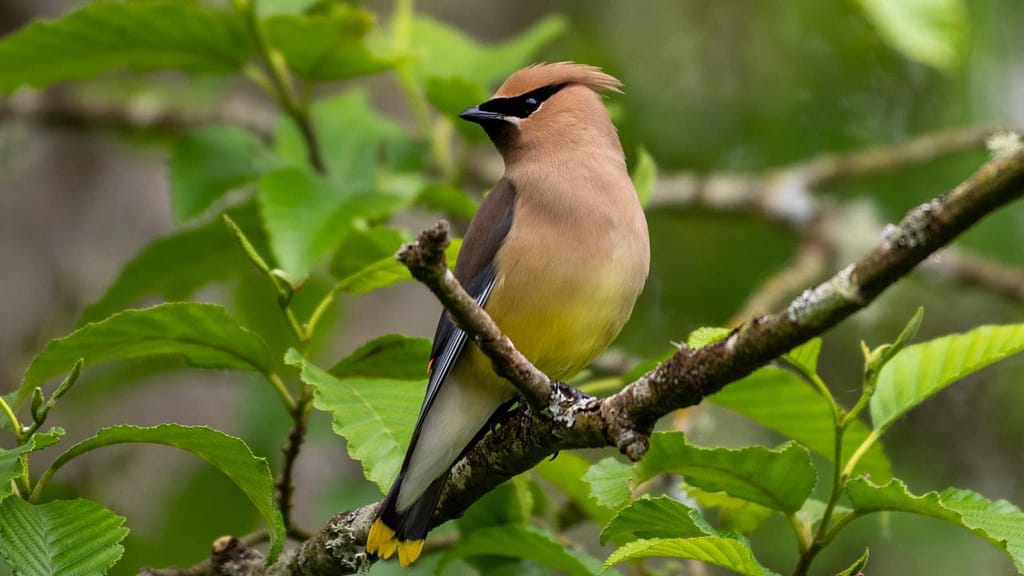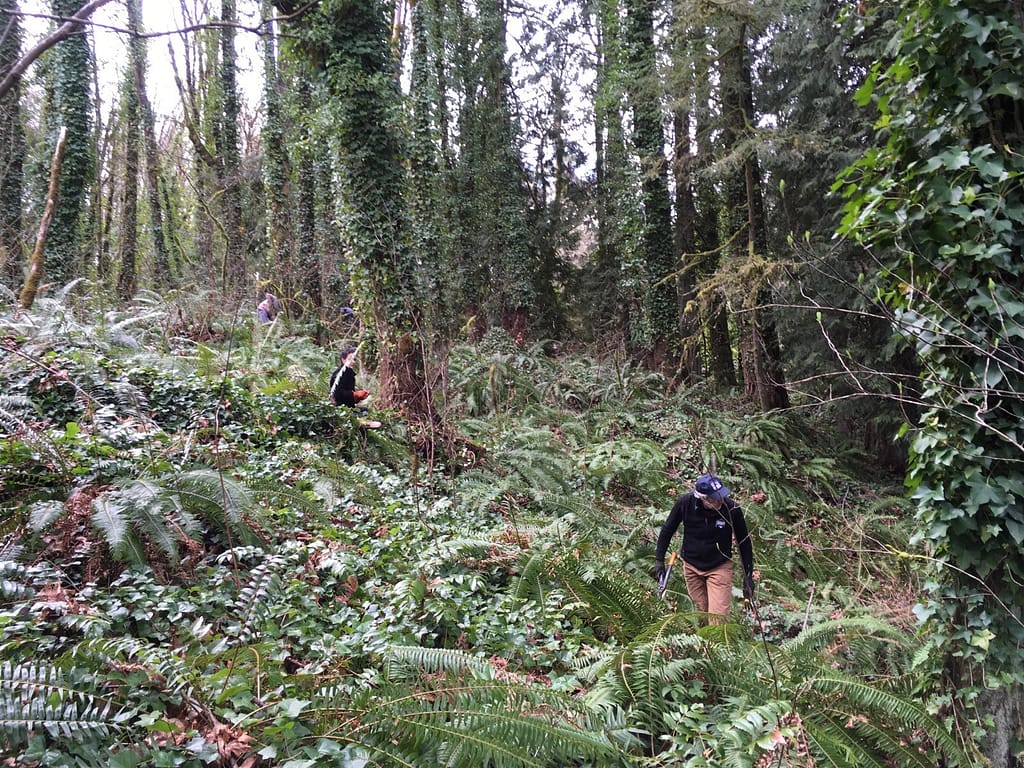Why Do We Care about English Ivy?
Many of us are familiar with English ivy as the invasive vining plant that aggressively covers trees, houses, and parks in our area. But this introduced plant isn’t all bad; it has some benefits to animals and pollinators. To understand why we need to remove ivy, we should try to understand how it exists in our ecosystems.
English ivy is non-native, but some of our local birds and pollinators have developed a relationship with the plant. The flowers are early to appear in spring, and host pollinators in abundance. The berry (which is poisonous to humans) is very calorie dense, and is available as a food source at a time of year when little else is available. Several of our bird species eat and regurgitate the berries, allowing the plant to widely distribute its seeds. Besides providing food, the plant can create habitat for birds, bats, and small mammals.
On the other hand, English ivy grows and spreads quickly to smother native vegetation. Ivy tolerates anything from full sun to deep shade and will cover an entire forest floor, significantly reducing plant diversity and causing major changes to the ecosystem. It climbs up trees, making a tree heavier and more likely to blow over in the wind. It eventually can kill a tree by growing into its canopy and blocking the tree from receiving sunlight. These characteristics of ivy make it very dangerous to allow to grow uncontrolled.
Unfortunately, ivy is already widespread in western Washington, and the threat to plant diversity and our forests greatly exceed the food and habitat it provides.
The best practices are to remove the plant when possible, or to cut the vines before they fruit or overtake a tree. By controlling ivy, we can prevent the loss of native ecosystems which support a diversity of animal species. You can make a difference by cutting ivy off of the trees at your house, or by working with neighbors, parks, or local nonprofits to remove ivy.



